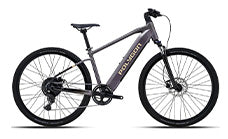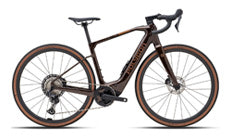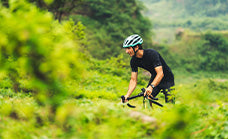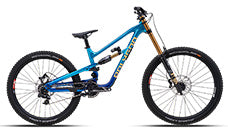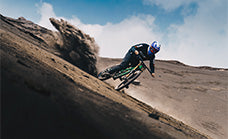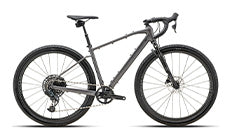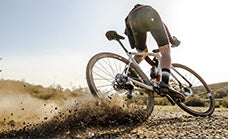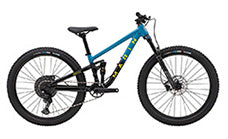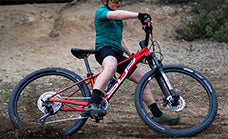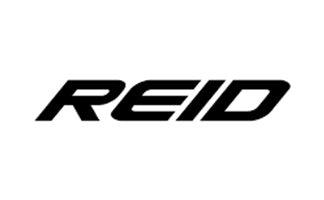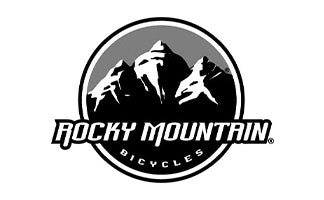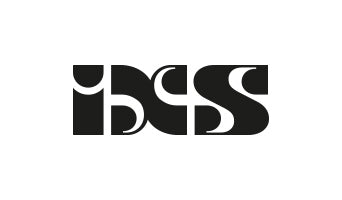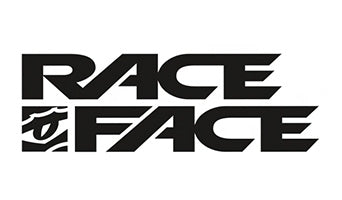How to Choose the Perfect Bike for Your Child

Selecting the right bike for your child is more than just choosing a colour or style; it's a crucial decision that impacts their development, safety, and overall enjoyment of cycling. A bike that fits well not only builds confidence but also enhances coordination and fosters a lifelong passion for cycling in a secure environment.
The range of children’s bicycles is extensive, each tailored for different stages of a child’s growth and cycling skills. From balance bikes, which are essential for toddlers starting to master balance, to pedal bikes that introduce the intricacies of steering and pedalling, each type has a specific purpose. For older children, specialised bikes like mountain bikes and BMXs present opportunities to tackle diverse cycling disciplines and more challenging terrains.
Understanding the differences between these bikes and their intended uses is critical in making an informed choice that aligns with your child’s age, abilities, and interests. This guide will navigate you through these options, ensuring you select a bike that perfectly complements your child’s cycling journey.
Understanding Different Types of Kids' Bikes
Choosing the right type of bike for your child can make a significant difference in their cycling experience. Here’s a breakdown of the various types of kids’ bikes and their best uses:
- Balance Bikes: Perfect for toddlers and young children just starting out. These bikes have no pedals and rely on the child's feet to provide movement, helping them to develop balance and coordination before they graduate to pedal bikes. Balance bikes are an excellent tool for boosting confidence and providing a smooth transition to more complex bicycles.
- Pedal Bikes: Suitable for children who have mastered the balance bike and are ready to move on. Pedal bikes introduce the concept of pedalling and braking, key skills for more advanced cycling. These bikes come in various sizes to match the child’s height and ability, and they often feature adjustable seats and handlebars to grow with your child.
- Mountain Bikes: Ideal for older children who want to explore a variety of terrains and enjoy off-road cycling. These bikes are equipped with features designed to handle rougher terrains, such as suspension forks, durable tyres, and multiple gears. Mountain bikes encourage adventure and physical challenge, expanding a child’s cycling experience beyond the pavement.
- BMX and Trick Bikes: Designed for kids interested in performing tricks, jumps, and freestyle riding. BMX bikes have a robust frame and are generally equipped with a single gear. They are often seen in skate parks and on dirt tracks. These bikes not only provide a physical outlet but also help develop precision, timing, and agility.
Choosing the Right Size
Selecting the correct bike size is fundamental to ensuring your child enjoys a comfortable and safe riding experience. Here’s how to accurately measure your child and understand bike sizing to choose the most appropriate bicycle.
Height and Inseam Measurements: The first step in choosing the right bike size is to measure your child's height and inseam. The inseam measurement is particularly crucial because it determines the minimum height of the bike frame they can comfortably handle. Have your child stand against a wall, place a book between their legs as if it were a bike seat, and measure the distance from the floor to the top of the book.
Bike Size Charts: Bikes for children are typically categorized by the wheel diameter because it directly correlates with the bike’s overall scale suitable for different age groups. Common sizes are:
- 12-inch wheels – suitable for children aged 2 to 4 years,
- 16-inch wheels – ideal for children aged 4 to 6 years,
- 20-inch wheels – best for children aged 6 to 9 years,
- 24-inch wheels – appropriate for children aged 9 to 12 years. Each of these sizes is designed to match the general height and inseam measurements of children in these age ranges, providing a starting point for selecting the right bike.
Adjustability for Growth: Look for bikes with adjustable seat heights and handlebars. This adjustability allows the bike to grow with your child and extends its usability over several years. Adjustable features not only ensure a better fit as your child grows but also offer better value for money as you won’t need to replace the bike as frequently.
Key Features to Consider
When choosing a bike for your child, several key features will significantly affect their riding experience. Understanding these features can help ensure you select a bike that is safe, comfortable, and appropriate for your child's skill level.
Brakes: There are two main types of brakes found on children's bikes: coaster brakes and hand brakes.
- Coaster Brakes: These are activated by pedalling backwards and are common on younger children’s bikes, particularly those with 12-inch and 16-inch wheels. Coaster brakes are simple to use and don't require much hand strength, making them suitable for younger children who may not yet have the dexterity for hand brakes.
- Hand Brakes: These require the rider to squeeze a lever on the handlebars to activate the brakes. Hand brakes offer better control and are essential as children start riding faster or on more varied terrain. They are typically found on bikes with 20-inch wheels and larger, and are recommended as children grow and gain more cycling experience because they prepare them for adult bikes.
Weight: The weight of the bike is a critical consideration. A lightweight bike is easier for a child to handle, manoeuvre, and get the most enjoyment out of. Lightweight frames, typically made from aluminium, are ideal as they make it easier for a child to pedal, steer, and carry the bike if needed, without compromising on the strength of the bike.
Gears: Gears are an important feature for children who are ready to ride on varied terrains or need to handle hills.
- Single-Speed Bikes: Many children's bikes are single-speed, particularly those designed for younger riders. These bikes are easier to maintain and ride, making them a good choice for beginners.
- Multi-Gear Bikes: As children gain more experience and perhaps venture into more challenging rides, such as mountain biking or longer road trips, gears become beneficial. Multi-gear bikes allow the rider to adjust the difficulty of pedalling according to the terrain, which can be particularly helpful on uphill or rugged routes. Choosing a bike with an appropriate number of gears (usually ranging from 3 to 21) depends on the child’s experience and the typical riding locations.
Safety and Comfort
Ensuring your child's bike is safe and comfortable is paramount to their enjoyment and progress in cycling. Here are the essential safety features and comfort factors to consider, along with the necessary accessories to enhance their riding experience.
Safety Features
- Effective Brakes: Whether you opt for coaster brakes for younger children or hand brakes for older ones, ensure they are responsive and easy to use. Regularly check the brake function to maintain safety.
- Spoke Guards: Spoke guards help prevent items (especially small feet and fingers) from getting caught in the spokes, which can lead to injuries.
- Non-slip Pedals: These are crucial to prevent feet from slipping off, especially in damp conditions or when your child is just learning to ride. Look for pedals with a textured or rubberized surface to provide extra grip.
Comfort Factors
- Appropriate Saddle Height: The seat should be set so that when your child is sitting on the saddle, their feet can touch the ground with a slight bend in the knees. This ensures they can comfortably stop and start without losing balance.
- Handlebar Reach: Handlebars should be within easy reach; your child should be able to grip them comfortably without leaning forward too much. Proper alignment helps reduce strain on the back and shoulders, making the ride more comfortable.
- Adjustable Components: As children grow quickly, having adjustable handlebars and seats allows the bike to grow with them, maintaining comfort over time.
Accessories
- Helmets: The most critical accessory for safety, a helmet should fit snugly but comfortably, sitting level on your child’s head and low on the forehead.
- Knee Pads and Elbow Pads: These provide extra protection against scrapes and bruises, which are common for many young cyclists, especially when they are just starting to learn new skills.
- Gloves: Cycling gloves can help prevent blisters and improve grip, especially on longer rides or in hot weather.
Where to Buy and What to Avoid
Selecting where to buy your child's bike and knowing what to avoid can significantly impact the quality and suitability of the bike you choose. Whether considering a new or second-hand bike, here are some tips to ensure you make an informed decision.
Retail versus Online Shopping
Advantages of Retail Shopping:
- Personal Service: In-store staff can provide expert advice and answers to your questions in real time.
- Immediate Fit and Feel: Your child can try out different bikes for size and comfort, ensuring a good fit before the purchase.
- Instant Gratification: You can walk out with a bike ready to ride, without waiting for delivery.
Disadvantages of Retail Shopping:
- Limited Selection: Physical stores may have limited stock or fewer models available compared to online options.
- Potentially Higher Prices: Retail locations often have higher overheads, which can translate into higher prices compared to online stores.
Advantages of Online Shopping:
- Wider Selection: A broader range of products is typically available online, including reviews to help inform your decision.
- Convenience: Shopping from home is convenient and can also offer access to better deals and promotions.
- Price Comparisons: Easier to compare prices and find the best deals across multiple retailers.
Disadvantages of Online Shopping:
- Cannot Try Before Buying: You can’t see or try the product before purchasing, which can result in size and fit issues.
- Return Issues: Returning products can be cumbersome and sometimes costly if the fit or product doesn’t meet expectations.
Consider checking out Bikesonline.com.au for competitive pricing and a good range of children’s bikes. Their value can be particularly appealing when budgeting for a quality bike without overspending.
Second-Hand Bikes
- Condition Check: Examine the bike for any signs of excessive wear and tear, such as rust, damaged components, or worn tires.
- Safety Inspection: Ensure all critical features like brakes and gears are working correctly. It might be worth having a bike mechanic inspect it before use.
- Suitability: Confirm the bike is appropriate for your child’s age and height, as outdated or improperly sized bikes can be unsafe and uncomfortable.
Avoiding Common Mistakes
- Oversizing: Avoid buying a bike that your child will "grow into." A bike that's too big can be difficult and dangerous for a child to control.
- Overlooking Adjustability: Bikes with adjustable seats and handlebars are preferable as they can adapt to your child's growth spurts.
- Neglecting Test Rides: If possible, have your child test ride the bike (especially when buying in person) to ensure it feels right and comfortable.
Conclusion
Choosing the right bike for your child involves several key considerations that can significantly enhance their cycling experience. From selecting the appropriate type and size of bike to understanding the essential features for safety and comfort, every decision plays a crucial role in ensuring your child enjoys a safe, comfortable, and enjoyable ride.


